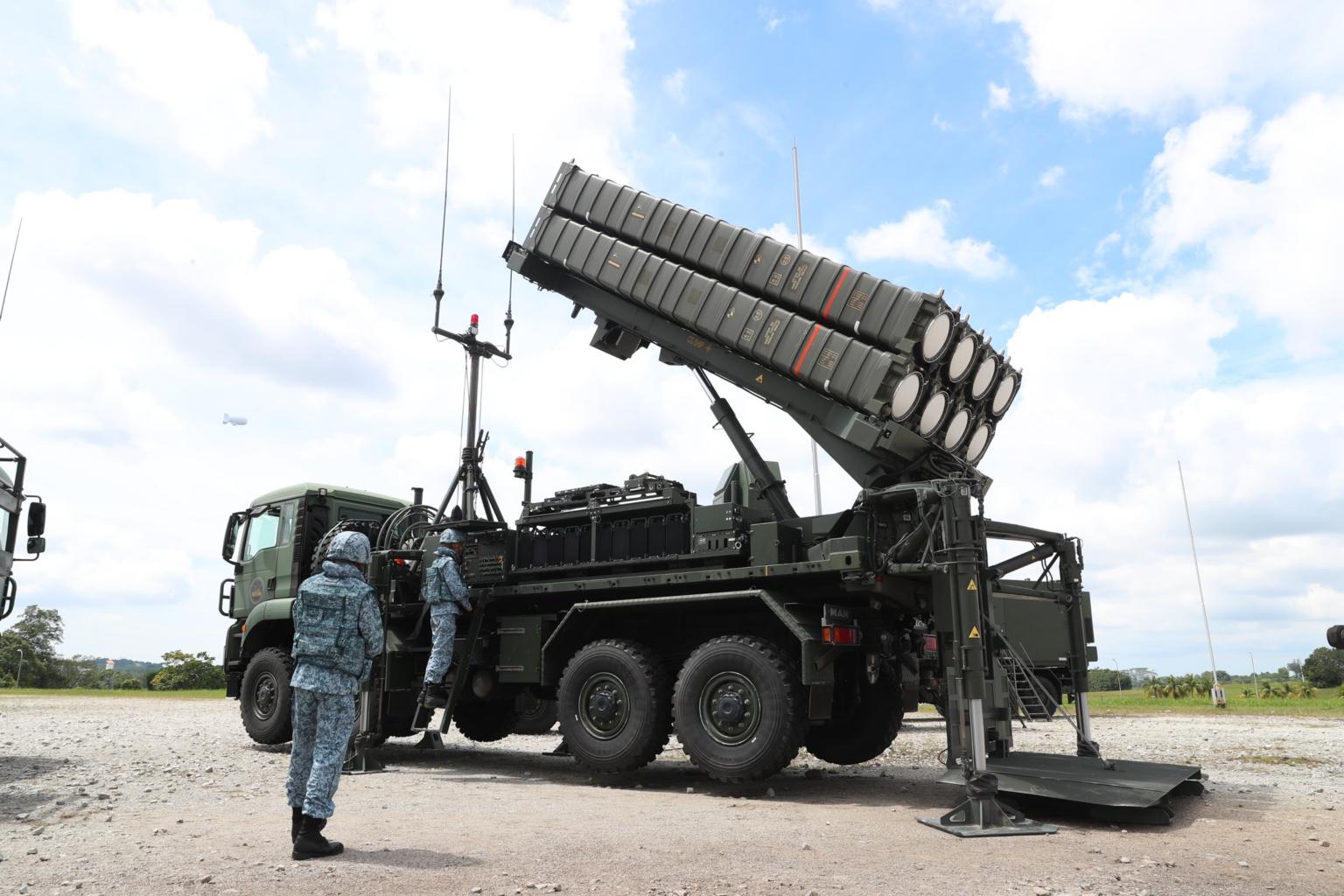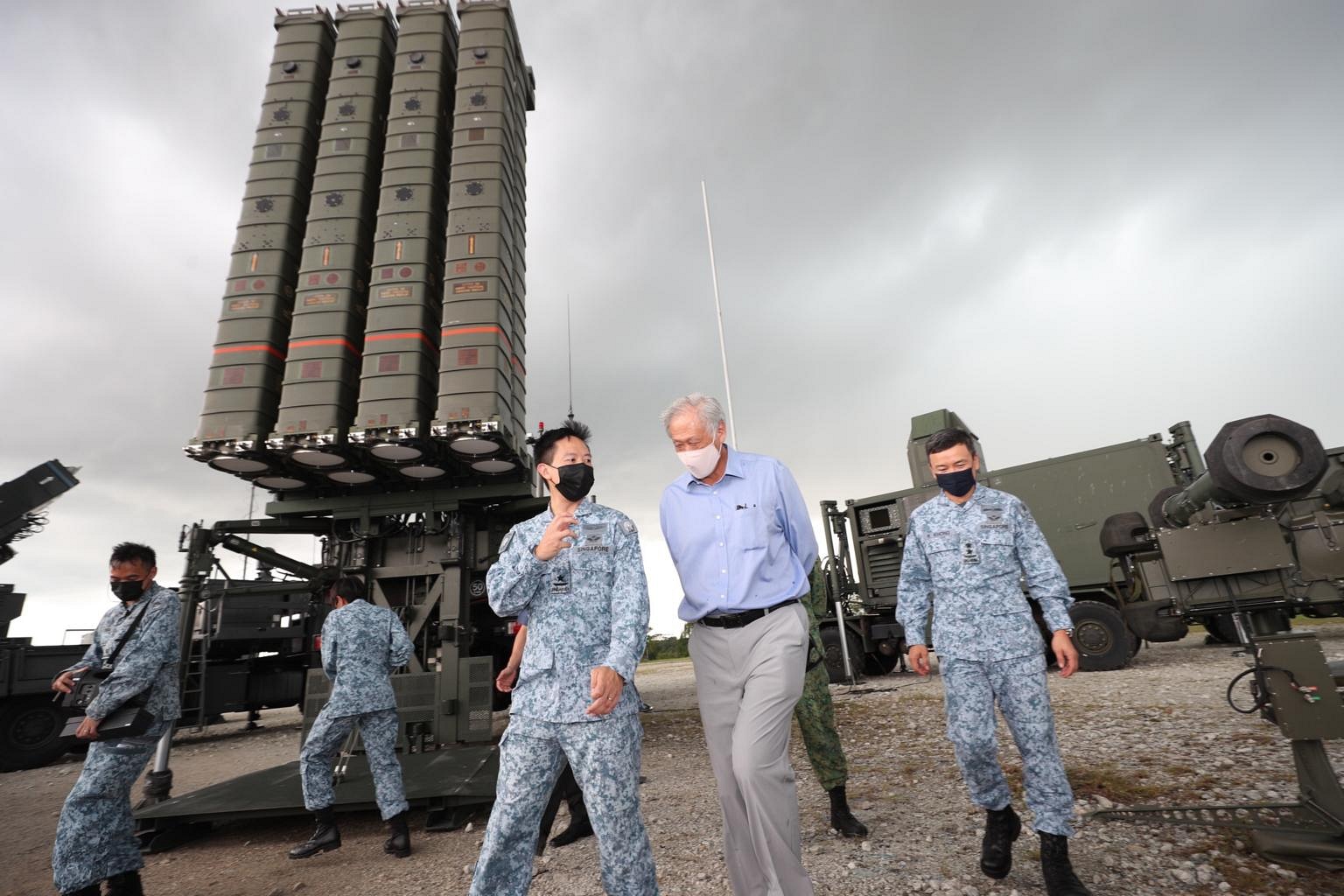Next-gen Aster 30 missile system now deployed, boosting Singapore's air defence network
Sign up now: Get ST's newsletters delivered to your inbox

The ground-based system has also been integrated into the RSAF's networked Island Air Defence System.
ST PHOTO: TIMOTHY DAVID
Follow topic:
SINGAPORE - The Republic of Singapore Air Force's (RSAF's) next-generation Aster 30 missile system that is designed to neutralise air threats far away has been conducting round-the-clock operations since August.
The ground-based system has also been integrated into the RSAF's networked Island Air Defence System, which can now counter a range of threats, from fighter jets to unmanned aerial vehicles and precision-guided munitions.
Defence Minister Ng Eng Hen said the system's defence capabilities today marked a significant milestone since it was first developed about 15 years ago.
The transformation is on a number of fronts, said Dr Ng, after witnessing an Aster-30 deployment drill at Lim Chu Kang Camp II on Thursday (Dec 17).
The system can now see and respond to targets much further away while requiring far less manpower, be it in detecting threats or loading ammunition.
Another significant improvement is that it can deal with different types of air threats, not just aircraft as in the past.
Dr Ng said: "So I would say it's a significant phase change that gives comfort that we can protect Singapore and Singaporeans from threats from the air.
"Given Singapore's small size and highly dense population, we'll always be vulnerable. Even with these air defence systems we can never be immune, but we can significantly reduce the level of threat. So I take great comfort from that."
Dr Ng added that the defence systems are state-of-the-art against munitions now on the market and that they will serve Singapore for at least the next two decades.
The air defence system - conceptualised around 2006 - integrates advanced sensors such as the Multi-Mission Radar and the Gulfstream 550 Airborne Early Warning aircraft and weapon systems such as the Aster-30 and shorter-range Spyder missile system.
Together with the smart Combat Management System, the air defence system jointly developed by the RSAF and the Defence Science and Technology Agency (DSTA) provides a real-time picture of the air situation by organising and combining data from multiple sources.
The combat management system - the "brains" of the network - can automatically classify threats and recommend the most effective weapon system to deal with them, using artificial intelligence and data analytics. This reduces operator workload and improves response time.
Previously, operators had to manually assess the threat each target posed and assign the suitable weapon system to take it down.
Air Defence Group Commander Loh Woon Liang said the island air defence system allows timely detection of all kinds of air threats, from unknown aircraft to air-launched munitions or unmanned aerial vehicles.

The newly-acquired Aster 30 increases its effectiveness, he said, noting: "Its range goes up to 70km, which allows defenders a greater response time to deal with a wide range of threats."
Singapore first took delivery of the French-made Aster 30 in 2018 to replace the i-Hawk that had been used for more than 30 years. A total of 11 people are needed to operate the i-Hawk, compared to six for Aster 30.
Third Warrant Officer Thiyagaraj Subramaniam, who is an Air Defence Systems Specialist operating the Aster 30, said the missile system offers greater automation and is easier to maintain than the i-Hawk.
"For example, to deploy the i-Hawk system we needed to use cranks, which was more labour-intensive. Now, these can be done with the press of a button," he said.
Mr Teng Siang Loong, a senior programme manager from DSTA, said the smart combat management system was designed and built with the flexibility to integrate different sensors and weapon systems, including future ones.
The network also allows all the different assets to operate together as a centralised pool of resources. "This enhances the resilience and sustainability of critical 24/7 air defence operations," he added.

